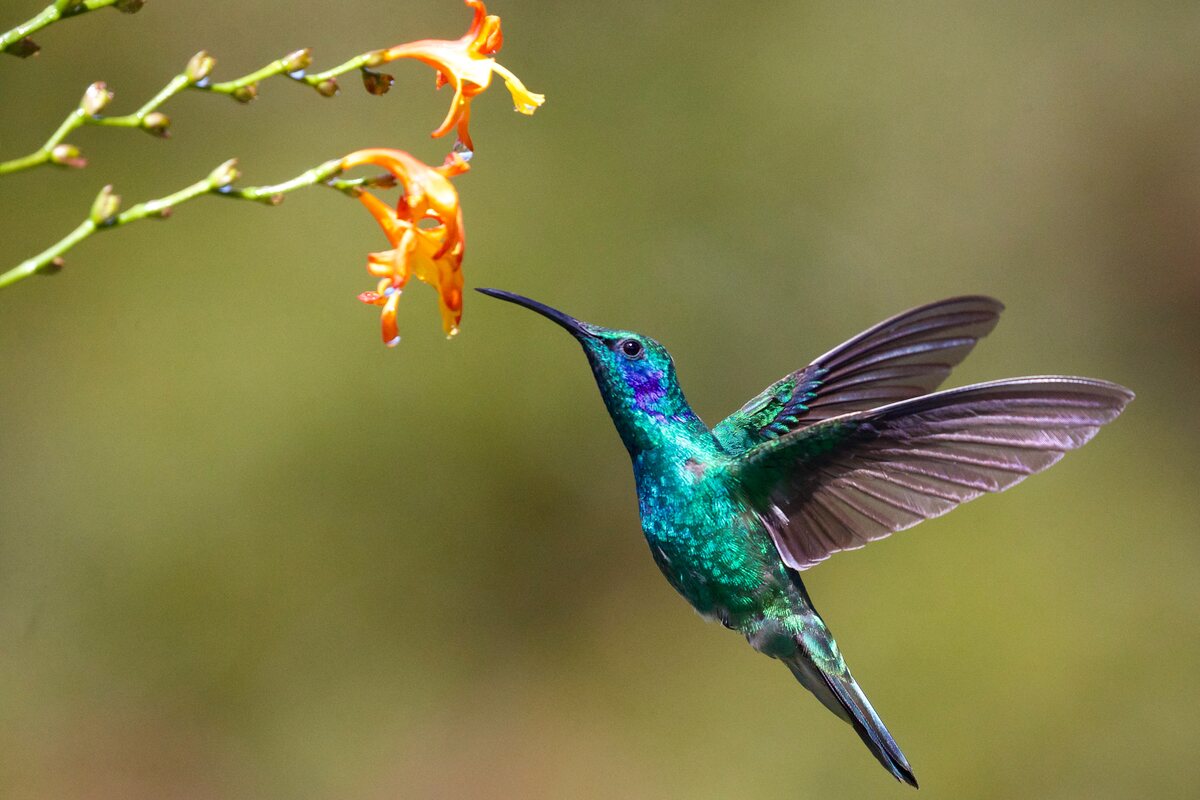
If you enjoy the chirping presence of hummingbirds and want to transform your yard into a hummingbird haven, look no further. This article will go deeper to discuss ways to attract hummingbirds to your garden.
1. Plant Native Plants, Annuals, and Perennials
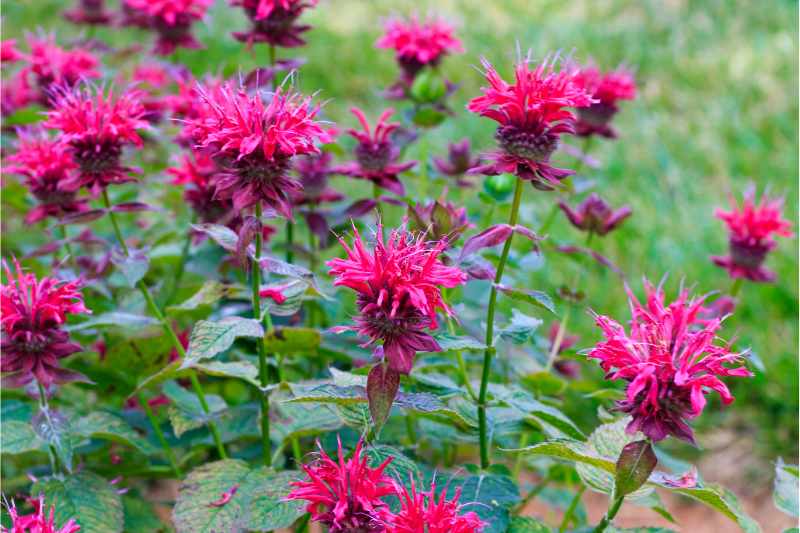
If you want to invite hummingbirds to your garden, create a variety of nectar sources as well as a safe environment. Consider planting various native plants, annuals, and perennials with nectar-rich flowers.
Tubular flowers with orange and bright red colors attract hummingbirds the most. Perennials like bee balm, salvia, trumpet vine, and trumpet honeysuckle are absolute favorites among hummingbirds. Don’t forget about coneflowers, cardinal flowers, phlox, red columbine, blue lupine, and delphinium.
Hanging baskets of fuchsia and impatiens can also add colors to your yard and attract hummingbirds.
Beyond perennials, annual plants like zinnias, petunias, and begonias can be fantastic additions to your garden. These bright and cheerful blooms also offer the sweet nectar that hummingbirds adore.
By choosing a diverse selection of native plants, annuals, and perennials, you’re not only providing a delightful buffet for the hummingbirds during their seasonal visits but also attracting a variety of beneficial pollinators like butterflies, bees, and wasps. It’s like throwing a hummingbird garden party for nature’s little helpers.
Fun Fact: Hummingbirds have a high metabolism, needing to eat every 10 to 15 minutes. They must visit around 1,000 to 2,000 flowers daily to meet their energy demands.
2. Hang Feeders Filled with Hummingbird Nectar
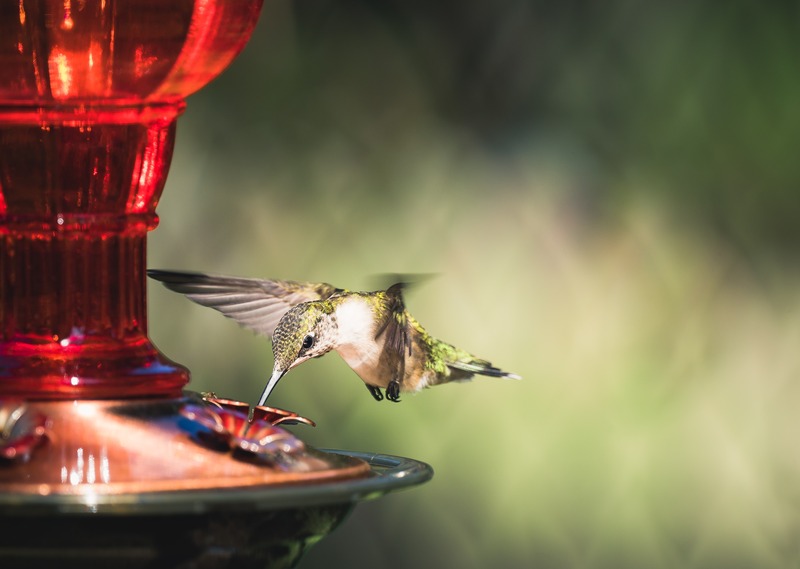
One of the best ways to attract hummingbirds to your garden is by hanging feeders filled with hummingbird nectar. These tiny birds have high energy demands, and nectar is like a supercharged fuel for hummingbirds. Hummingbird nectar is a mixture of sugar and water, and you don’t need any fancy equipment to make it.
All you need is a 4:1 ratio of water and white sugar. For instance, you can use four parts water with one part sugar.
To prepare the nectar, add the white sugar to hot water, and mix it well until it completely dissolves. Wait for the nectar to cool down and pour it into your hummingbird feeder. Although store-bought nectar is often colored red, homemade nectar doesn’t require food coloring.
Note: Avoid using honey or other sweeteners that can damage the hummingbirds’ kidneys or may even lead to death.
3. Buy Bright Red Feeders
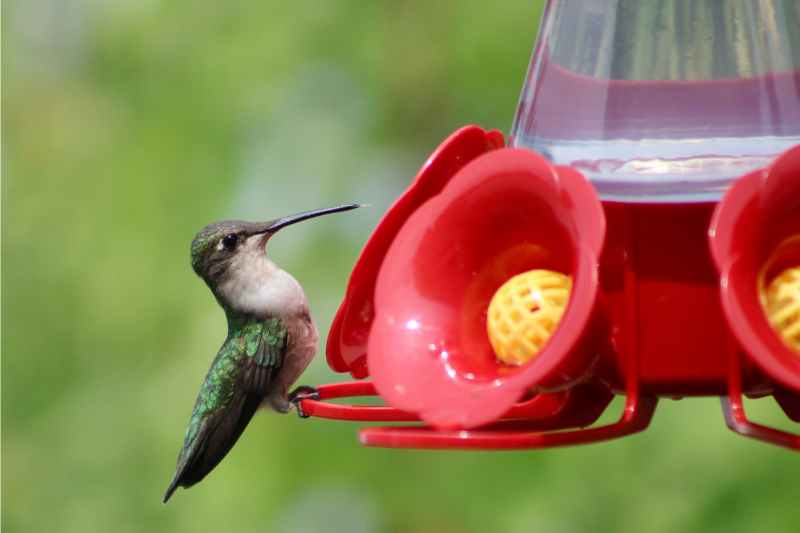
Bright red colors attract hummingbirds, so while purchasing the nectar feeders, go for the red ones.
Another handy feature to look for in a feeder is a built-in ant moat. This smart addition helps prevent ants from entering the feeder and contaminating the nectar.
While ants are not something hummingbirds eat, they can ruin the nectar and make it unappealing for hummingbirds.
Keep Feeders Clean
Neither humans nor hummingbirds like old or moldy food. Clean and refill the nectar feeders every few days, especially when it’s hot outside. If you see any cloudy water or moldy spots in the feeder, immediately clean it. Otherwise, bacteria can stick around, making the fresh sugar water go bad faster.
Space Out Your Feeders
Hummingbirds are territorial. Unlike other songbirds, they don’t like to feed together. To avoid any clash, hang multiple feeders with good spacing so the hummingbirds are out of sight of one another.
In addition to the proper spacing, you need to be mindful of where you place the feeders. Hang the feeders in a shaded area, yet visible to the hummingbirds. And allow enough space for hummingbirds to hover.
Hang Feeders in the Same Spot Year to Year
Once the hummingbirds have migrated, you can take down your hummingbird feeders. However, place those feeders back in their original spots before springtime to ensure their return to your garden.
Hummingbirds have a sharp memory, and the consistency of where you place your feeders in your garden helps the birds to establish those feeders as a reliable food source. It will make hummingbirds want to continue to visit.
If you wish these little friends to return to your place repeatedly, place your feeders back up before hummingbirds return.
4. Add Bright Colors to Your Garden
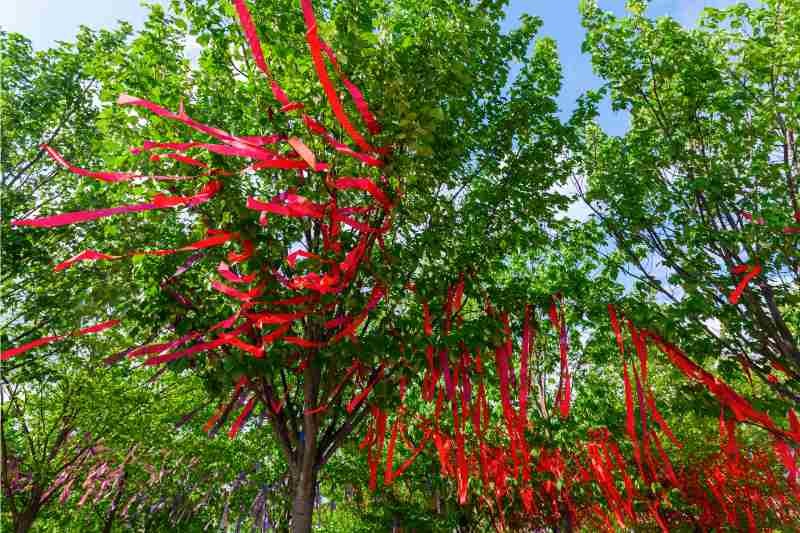
Decorate your garden with bright colors to let hummingbirds notice your welcoming place. Although bright-colored flowers with sweet nectar attract hummingbirds, any random bright objects can also do the same. Whether it’s a red birdhouse, an orange wind chime, or colorful garden decor, these additions will make your yard stand out to flying visitors.
You can also tie red- and orange-colored ribbons to trees and shrubs, which will help the flying hummingbirds notice your garden.
5. Provide Perching and Hiding Areas

Hummingbirds often perch near food sources, so why not hang small branches or thin twigs near the feeder and create an inviting space for hummingbirds to perch and hide?
Plant some shrubs and small trees around your garden. They add beauty to your yard and give hummingbirds natural perching spots. It’s like creating tiny bird-friendly lounges.
Hummingbirds build their tiny, expandable nests on tree limbs and other small horizontal surfaces, often constructing them from lichens and spider webs.
With dense shrubs or bushes, you can make some hiding areas for the hummingbirds that will give hummingbirds a safe place to retreat if they feel nervous or threatened. Providing perches such as slender poles, clotheslines, thin vines, trellises, wires, and multiple levels of shrubbery will give hummingbirds suitable shelter.
6. Provide Fresh Water
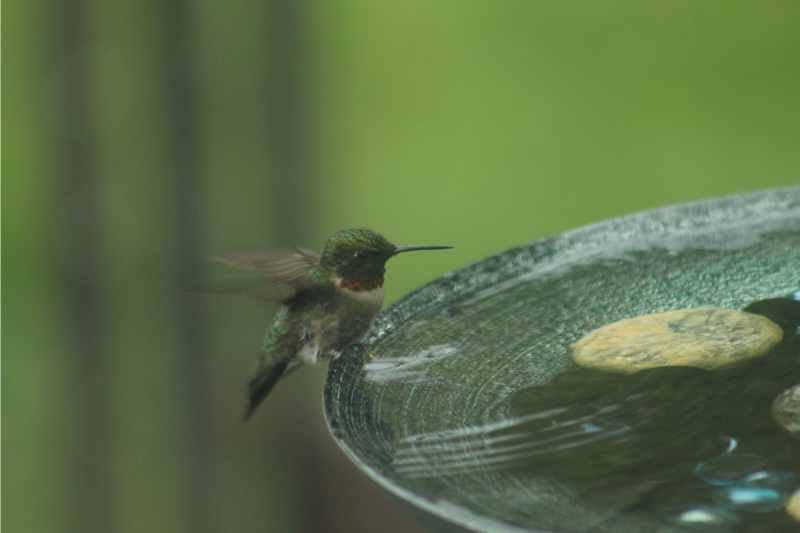
Hummingbirds love to stay hydrated. Consider placing a birdbath or other moving water sources such as sprinklers, fountains, waterfalls, misters, and drippers in your garden to attract hummingbirds. It doesn’t have to be something fancy. A shallow dish or a saucer works well. Just keep it clean and change the water regularly.
Fresh water quenches thirst and offers hummingbirds a place to bathe and cool off. Hummingbirds are big fans of the sight and sound of running water. With a tiny fountain, sprinklers, or a dripper, you can give hummingbirds another reason to return for more delightful visits.
7. Help Hummingbirds See Your Windows
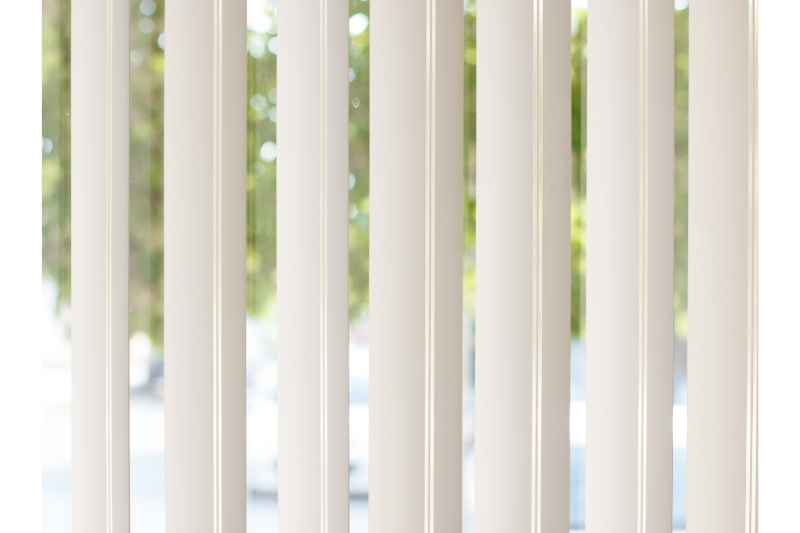
Birds of all kinds can sometimes run into windows because they get confused by the reflections. Hummingbirds likewise think it’s a clear path to trees or the open sky, then they hit hard glass. Hummingbirds are tiny and fly at high speeds, so running into hard glass is dangerous.
You can try some simple tricks to help hummingbirds see your windows and prevent crashes. Applying window clings or decals with patterns they can see, installing screens or netting, and placing plants or decorations nearby can make a big difference.
You can also keep curtains or blinds partially closed and use reflective tape on the windows.
8. Put out Fruits
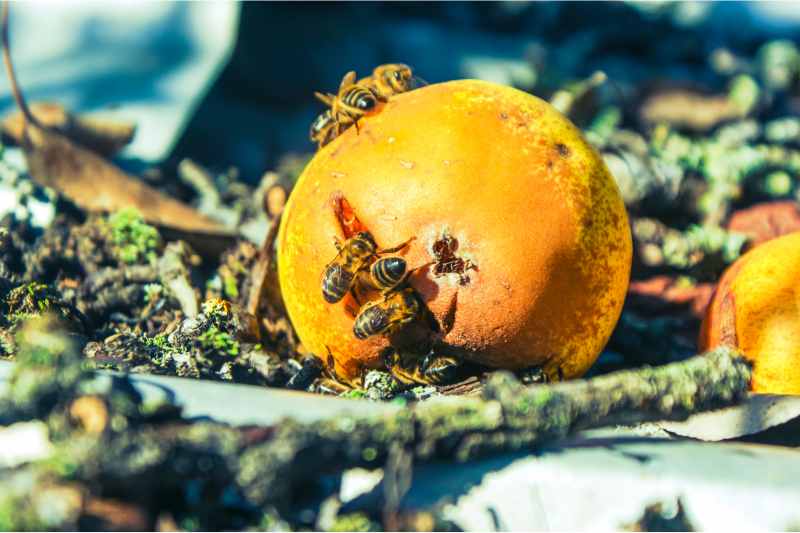
Hummingbirds are big fans of fruit flies and other small insects. So, if you have some overripe fruit, wait to toss it. Find a cozy spot in your garden, preferably a hidden nook, and set the fruit out for the hummingbirds.
As the fruit starts to rot, it will attract plenty of fruit flies and other small insects, like wasps and bees, which hummingbirds absolutely adore. By offering a little insect feast, you’ll give hummingbirds a nourishing treat and a natural source of protein.
How NOT to Attract Hummingbirds to Your Garden
Even if you’ve taken all the proper steps to attract hummingbirds, they might still be hesitant to visit your space. Here’s a summary of things to avoid if you want to attract hummingbirds to your garden:
- Don’t Use Pesticides and Chemicals: Hummingbirds are sensitive to chemicals, so avoid using pesticides or herbicides in your garden. These can harm hummingbirds and may even contaminate the nectar they feed on.
- Avoid Artificial Sweeteners or Food Coloring When Making Nectar: When making hummingbird nectar, stick to a simple solution of sugar and water. Avoid artificial sweeteners or food coloring, as they can harm the birds.
- Don’t Let Feeders Get Dirty or Moldy: Keep your hummingbird feeders clean and mold-free. Moldy or spoiled nectar can make hummingbirds sick and deter hummingbirds from visiting.
- Don’t Place Feeders Near Windows: Avoid hanging feeders too close to windows, as hummingbirds may mistakenly fly into hummingbirds. Hang feeders at least 15 to 20 feet from windows or use window clings to prevent the birds hitting glass.
- Don’t Add Red Dye to Your Homemade Nectar: There’s no need to add red dye to the nectar or the feeder. The red color of the feeder itself is enough to attract hummingbirds.
- Don’t Overcrowd the Feeding Area: Provide enough space between feeders to prevent aggressive behavior among hummingbirds. They can be territorial and may avoid an area with too much competition.
FAQ About Hummingbirds
While habitat loss and climate change are some of the major threats on a larger scale, in their immediate environment, hummingbirds face danger from various predators. Low-flying hummingbirds are vulnerable to attacks from animals like frogs, fish, snakes, and lizards.
Even during nesting, hummingbirds face risks as squirrels, chipmunks, bluejays, and crows will not hesitate to eat hummingbird eggs and babies.
No, using coconut sugar to make hummingbird food is not recommended. Using other types of sugars, sweeteners, or substitutes like organic sugar, Stevia, aspartame, brown sugar, coconut sugar, demerara sugar, agave, honey, corn syrup, etc., can harm hummingbirds.
The best time of year to attract hummingbirds to your garden depends on your location and the local climate. If you live in a warmer region, you can start putting out your hummingbird feeder as early as February or March.
Conversely, in colder areas, waiting until April or May to put out feeders is prudent, as it allows for the potential late arrival of hummingbirds and ensures that the feeders are available when the hummingbirds need them the most.
It’s common to take several weeks before hummingbirds discover a new feeder. To give hummingbirds the best chance of finding your feeder, wait at least two weeks before making any changes or moving the feeder to a different location.
Hummingbirds can be frightened by loud noises and sudden movements, causing hummingbirds to fly away. They are typically drawn to red colors but may be deterred by specific bold colors like yellow.
The presence of predators such as cats, dogs, or aggressive bird species can also make hummingbirds feel uneasy and keep hummingbirds from visiting your garden or feeders.
Call in the Pros
Creating a hummingbird-friendly garden can be fun for some, but if you’d rather enjoy hummingbirds in your garden without the effort, consider hiring a landscaping expert. They can help design a welcoming space that hummingbirds love. LawnStarter connects you to the best landscaping pros near you, and you’ll get quotes in minutes.
Main Image Credit: Unsplash